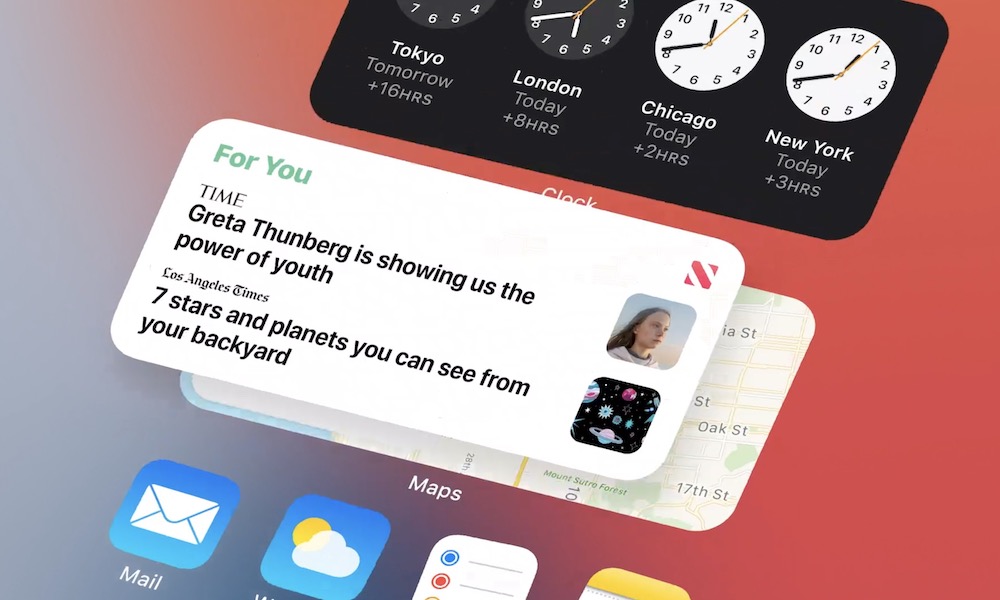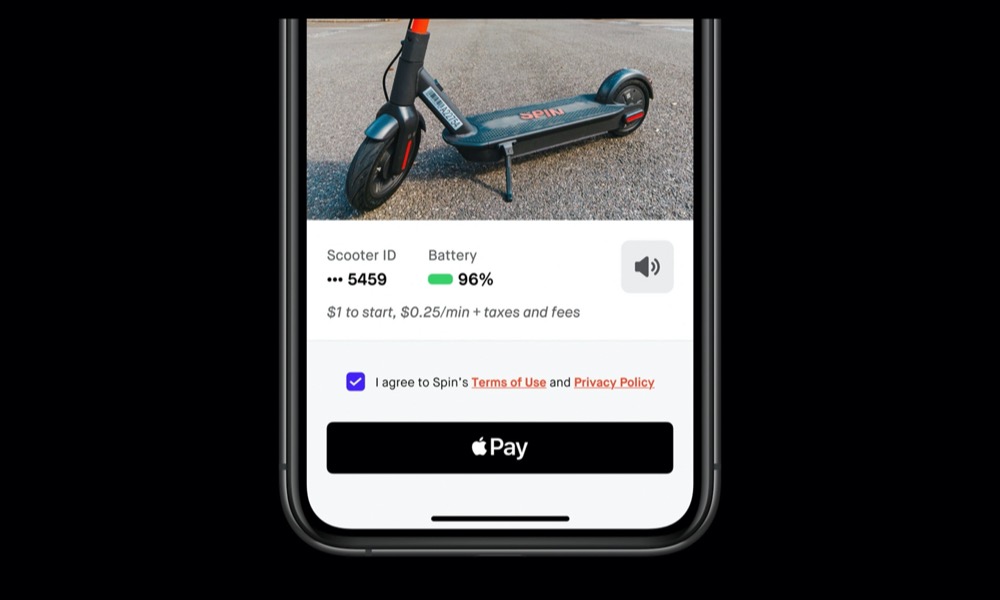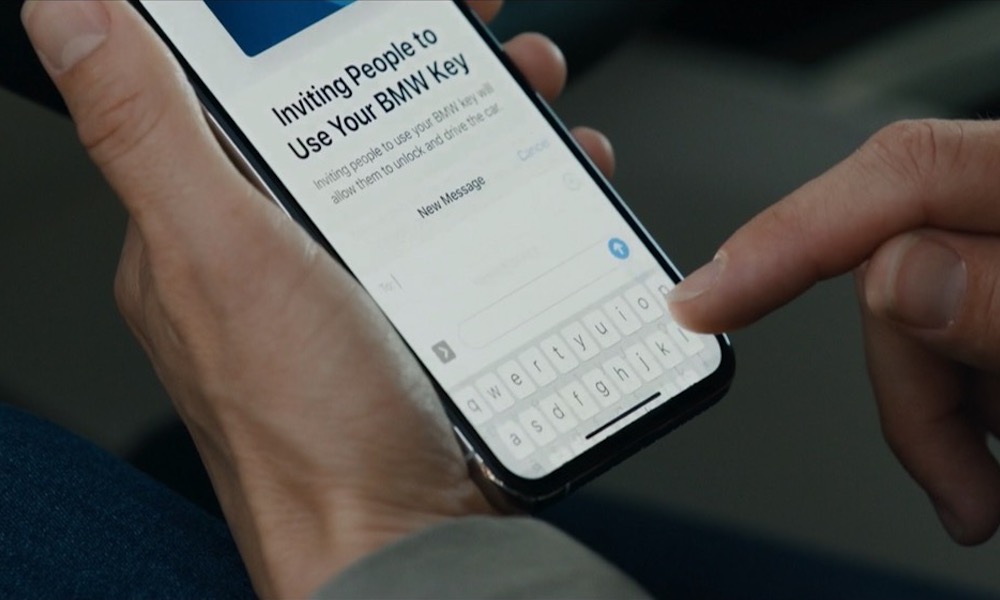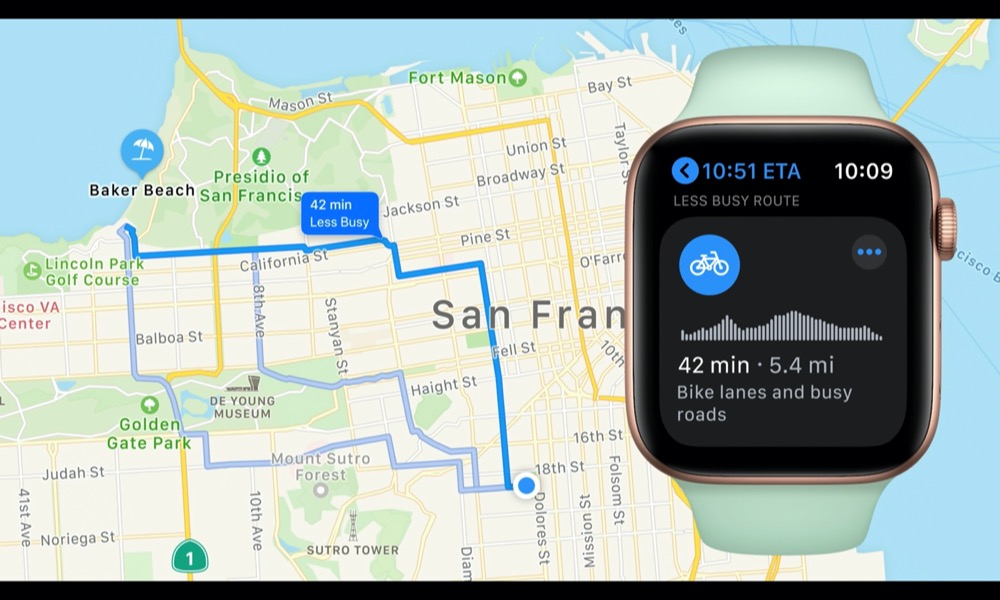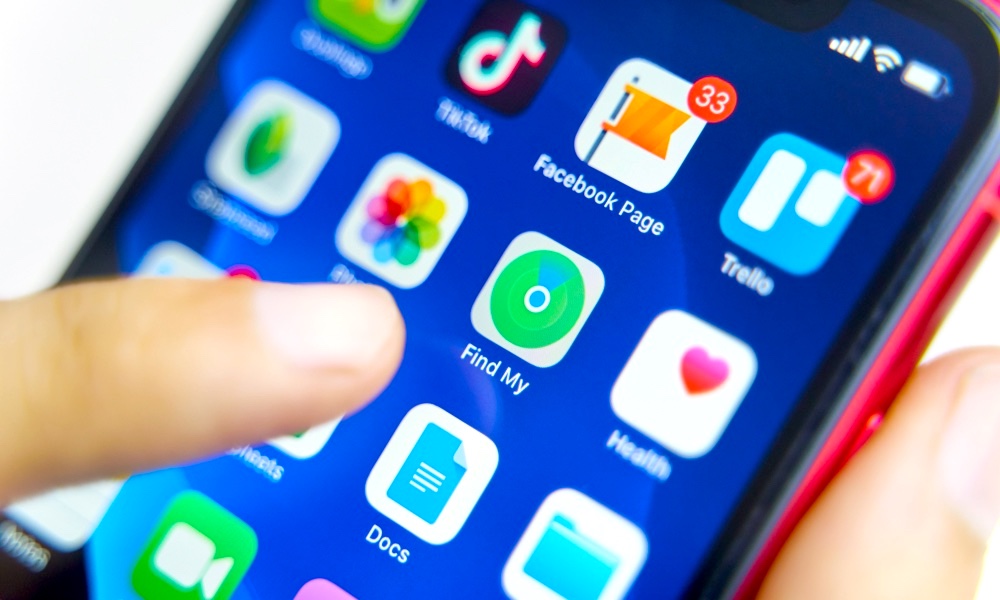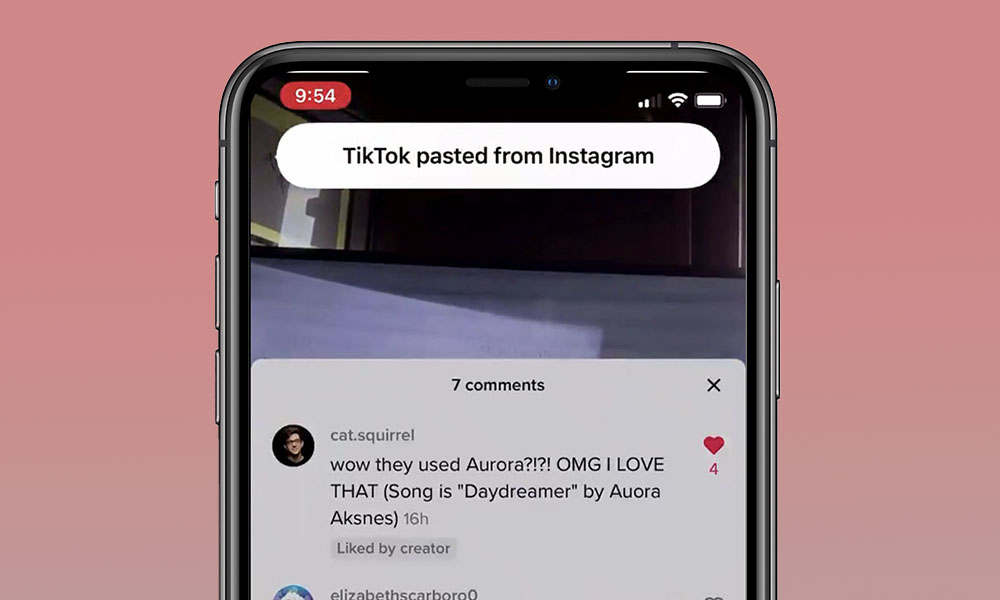These Are the 8 Most Exciting Features Coming to watchOS 7 and iOS 14
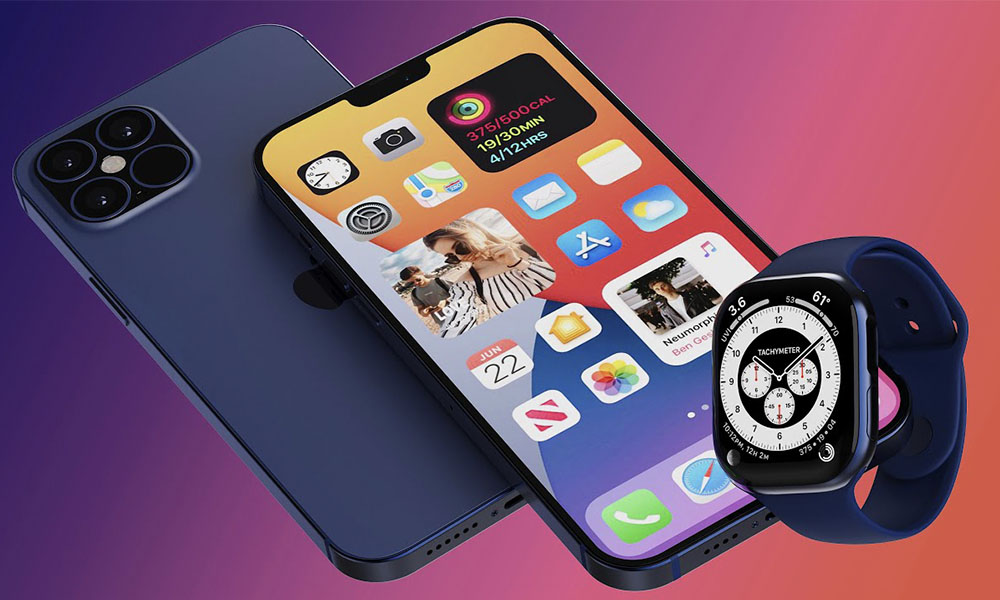 Credit: EverythingApplePro
Credit: EverythingApplePro
There's a lot of cool new stuff coming in iOS 14 and watchOS 7 when they arrive later this year, ranging from big features like a whole new home screen experience and sleep tracking to a much longer list of smaller quality of life improvements.
In fact, there's so much packed in here that it can be hard to dig through everything that's on the menu, but as with past iOS and watchOS updates, Apple has a few marquee features that stand out from the rest. Read on for the 8 most exciting features that you can expect to see in iOS 14 and watchOS 7.
The New Home Screen
Perhaps the biggest news for iOS 14 is that we'll finally be getting a whole new home screen design, so you'll no longer have to envy the flexibility that your Android-toting friends have been enjoying for years. Even better, however, is the fact that Apple has done this in the most comfortable and convenient way possible.
In iOS 14, you'll be able to use widgets anywhere on your home screen and even hide specific home screen pages, but the best part is that you don't have to do any of this, and there's nothing new to learn. If you're happy with the way that iOS 13 works right now — and many users truly are — then you can just ignore the changes and carry on as normal without adding any widgets to your home screen. Sure, you'll still have the App Library sitting on the last home screen page, but that's pretty easy to avoid if you really don't want to use it.
On the other hand, if like some of us you've been itching to do more with your iPhone home screen, you're going to love the fact that you can now drop in custom widgets in a variety of sizes on any screen, hide screens you don't need, and even relegate those apps that you almost never use (but still want to keep installed) to the App Library, where they'll be safely out of sight and out of mind. iOS 14 is going to be a whole new ball game for iPhone power users.
App Clips
Speaking of apps that you rarely use, iOS 14 has another new feature that will hopefully help you get them off your iPhone entirely, and keep it that way.
The new App Clips feature will let you download small "micro-apps" whenever you need them without having to install the whole app. Need to look up a restaurant review on Yelp, pick up a car or scooter rental in a new town, or order from a new coffee shop? App Clips are here to rescue you from the hassle of having to install a whole new app just for services that you access once in a blue moon.
You'll be able to trigger these App Clips in a variety of different ways, including scanning QR codes with the iPhone camera, tapping NFC tags in locations such as stores and kiosks, or even opening them directly from websites that you visit, and they'll natively support features like Sign in with Apple and Apple Pay, making it even easier to complete transactions. Best of all is that once you're done, the App Clip simply goes away, rather than being left lying around and cluttering up your home screen (or App Library).
Sleep Tracking
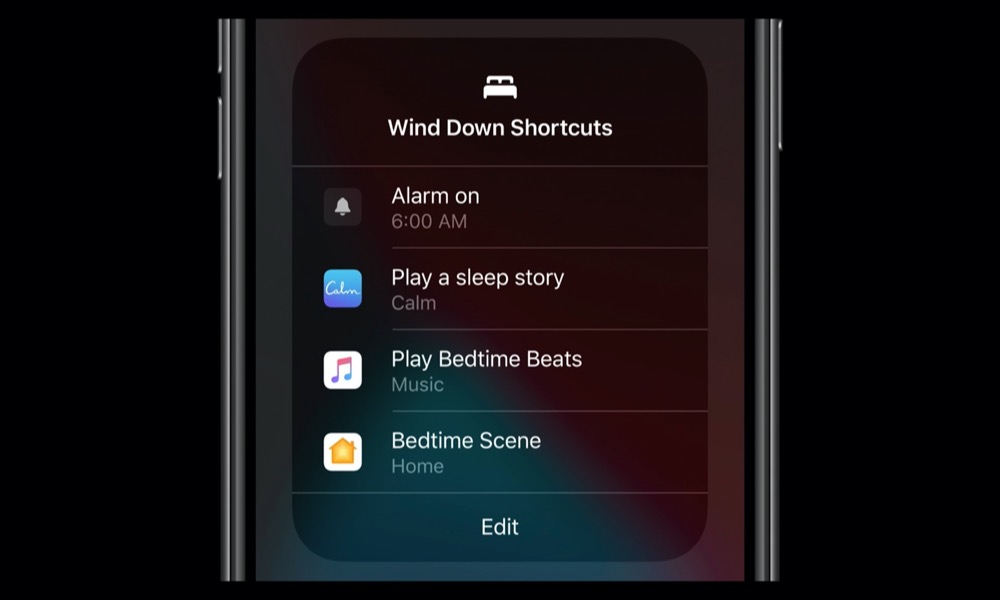
Although sleep tracking hardware and apps are nothing new, many users are reluctant to add yet another piece of technology to their world, and Apple naturally wants the Apple Watch to be the only health and fitness device that most people ever need.
Back in iOS 10 Apple added very basic "bedtime" tracking to its Clock app, but after it acquired sleep tracking company Beddit a few months later, it was clear that this was just the tip of the iceberg, and now with watchOS 7 and iOS 14, Apple's plans are coming to fruition with a "holistic" approach to sleep that will not just track how much sleep you're getting, but also encourage you to wind down properly at the end of each day and then gently easy into your morning routine when you wake up.
This will include things like playing music or ambient sounds during your "wind-down" time, as well as offering to turn off lights and other home devices. The only catch is that you'll need to wear your watch to bed each night to take advantage of the sleep tracking features, but watchOS 7 will keep the screen off to save power, and we're hoping that the Apple Watch Series 6 will offer some battery improvements to go along with this.
Car Key
Unless you're planning on buying a new BMW, it may be a bit hard to get excited about this feature just yet, but we think it's pretty cool for what it says about the future of technology.
At this point, Car Key is really little more than a fancy way to unlock your car, and since it relies on NFC at this point, it's arguably less convenient than simply using the keys that are already in your pocket. However, it also lets you easily share your car keys with friends and family via iMessage, which is way more convenient than trying to make copies of modern car keys, and it's already enough to let you leave your keys at home. In fact, combined with Apple Pay, HomeKit, and the work Apple is doing on digital ID cards you may soon be able to leave home with nothing more than your iPhone, or even just your Apple Watch.
While BMW is the first onboard, we wouldn't be surprised if 3-5 years from now it's hard to find a car that doesn't support Car Key, and the standard already supports the Ultra Wideband technology in current iPhone models, so it won't be long before you can simply leave your iPhone in your pocket, in much the same way most key fobs work — but even more securely.
Cycling Directions
Apple Maps gets a lot of criticism for how much it lags behind Google Maps, and while some of that is deserved, for the most part its evolved in leaps and bounds over the past few years. Plus, Apple doesn't tend to just bolt on features haphazardly — when it adds something, it does it very well.
Such is the case with the new Cycling Directions feature that's coming in iOS 14, which will not only direct you via the appropriate routes for taking your bike around town, but will provide much more detailed information and guidance. For example, it will tell you in advance whether you can expect a challenging ride with steep, hilly terrain or a relaxing flat ride, as well as whether the roads you'll be travelling on will be quiet or busy. The turn-by-turn directions will also let you know when you'll need to dismount to climb stairs or cross streets, and there will be routing options to avoid challenges like stairs altogether.
Plus, it's going to be available on the device where cycling directions are the most useful: the Apple Watch, complete with haptic feedback for turn-by-turn directions. This is something that Google Maps can't match right now, since it actually abandoned its Apple Watch app entirely a few years ago.
Find My... Tile?
While we're sure Apple's much-rumoured AirTags are still on the horizon, it looks like they won't be the only tracking devices that will be able to take advantage of the powerful crowdsourcing network that Apple began building into its devices last year.
With iOS 14, Apple will in fact be opening that network up entirely to any third-party developer who wants to plug into it. Traditionally, developers have had to rely on their own apps and crowdsourced networks, which meant that if you lost a Tile tag, it could only be located by somebody else using the Tile app. With Apple's Find My network, however, that effectively gets expanded to anybody on the planet who has a recent iPhone, iPad, Mac, or Apple Watch — an order of magnitude wider than even the most popular third-party item location networks.
Privacy Improvements
For the past several years, Apple has made it a mission to bake privacy into all of its products, with Apple CEO Tim Cook stating that privacy is a fundamental human right. Last year it added some great new privacy features in iOS 13, and the changes in iOS 14 this year make it clear that it's not done yet.
You may have already heard about the new iOS 14 feature that will let you know when third-party apps are peeking at your clipboard — something that's already caught a few in the act even as of the very first developer beta. However, Apple is doing a lot of other little things that add up to better privacy for everyone involved.
For example, you'll no longer need to open up your entire photo library to third-party apps when you simply want to share a single picture, and you'll also be able to share your approximate location, since many apps for services like news and weather don't need your exact address, but just need to know in general what city or neighbourhood you're in.
Apple is also improving privacy under the hood in ways that you won't necessarily see, such as restricting the ability of apps to scan your Wi-Fi network to find other devices, as well as randomizing your Wi-FI hardware address to prevent businesses from tracking your iPhone when you walk into range of their Wi-Fi networks.
Custom Mail and Browser Defaults
If you're a fan of Apple's own first-party Safari and Mail apps, this won't seem like a big deal to you, but those who prefer to use other browsers like Chrome are going to really appreciate the fact that iOS 14 will finally let you do what every other desktop and mobile platform has permitted for years — set a different default browser and email app.
This is another feature that fits into the "What took Apple so long?" category, especially considering that you could delete the built-in Mail app as far back as iOS 10, yet you still couldn't define an alternative — tapping on an email link would still ask you to reinstall Apple's own default Mail app.
This change will be a welcome breath of fresh air for those who want to use alternative apps for mail and browsing, and may actually encourage some users to explore other possibilities, and in the same spirit of openness from Apple, it looks like the HomePod will also be gaining the ability to default to other music services.

